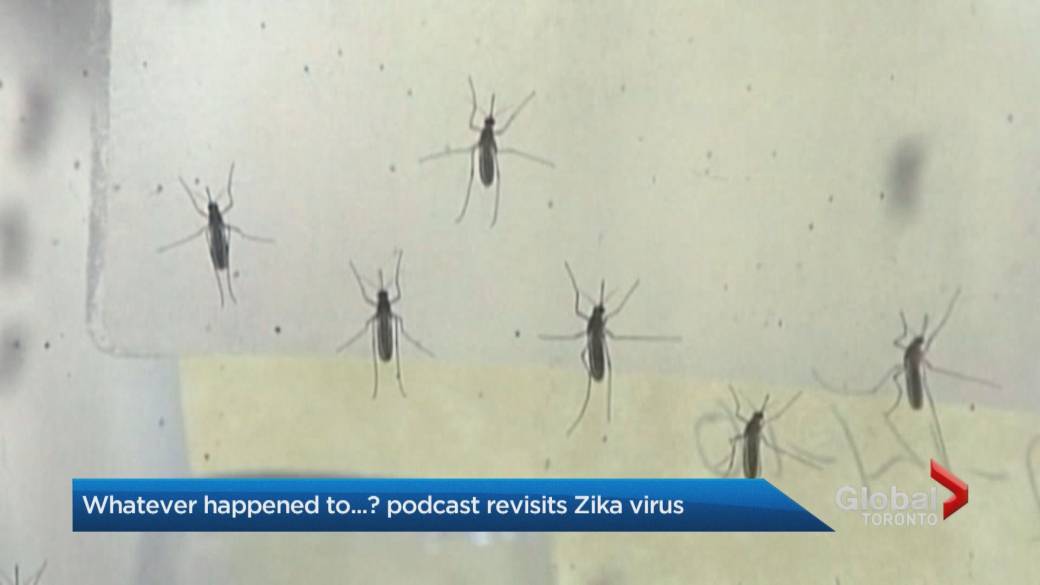An insect-transmitted virus that can live in sloths, primates and birds is spreading at an “unprecedented” rate, with health officials warning that it is emerging in parts of the world, including Europe, where it has never been detected.

Oropouche fever, a potentially fatal zoonotic disease, is transmitted by tiny flies called midges and mosquitoes, the World Health Organization (WHO) reported. There is currently no vaccine for the virus, which is part of the same family of diseases as Zika and dengue fever.
The virus has traditionally circulated in Central and South America, but this year it has also spread to new locations such as Cuba, Italy and Spain, according to research published on Aug. 8 in The Lancet.
“Arboviral infections have hit South America heavily in the past decade…. In addition, the region is now facing the re-emergence of another little-known arbovirus, Oropouche virus, on an unprecedented scale,” the research paper stated.
As of Aug. 1, there have been 8,078 confirmed cases of Oropouche fever in the region, reported in Bolivia, Brazil, Colombia and Peru, The Lancet reported. In 2023, there were only 832 cases were reported.
On July 25, the first deaths linked to Oropouche fever were reported, involving two young Brazilian women with no underlying medical conditions, The Lancet reported.

Because cases of the virus are spreading, the Pan American Health Organization (PAHO) and the European Centre for Disease Prevention and Control (ECDC) both recently issued a warning about Oropouche fever.
In June and July, Europe reported its first 19 cases of Oropouche virus disease, with Spain (12 cases), Italy (five cases) and Germany (two cases) being affected. Eighteen of these cases were linked to travel to Cuba, while one was connected to Brazil, according to a warning from the ECDC.
“The number of reported cases … that’s a gross underestimation of cases not just in endemic areas but also in return,” said Dr. Isaac Bogoch, a Toronto-based infectious diseases specialist.
“There’s a giant knowledge gap. Many physicians or people in the general public have never even heard of Oropouche virus. And then the second issue is that there may be limited diagnostic tests, and there might not be the same diagnostic capacity for this virus. And so we’re very likely undercounting cases.”
Bogoch, who has expressed concern about the virus, notes that its rise in popular Canadian travel destinations like Cuba means we may soon see cases in the country, although none have been reported yet.
The Canadian government updated a travel precaution against the virus on Aug. 9, stating that “While Oropouche fever has been detected in the Americas before, the number of cases is higher than expected, and cases are being reported in some areas of Brazil, Bolivia, and in Cuba where they haven’t been before.”
What to know about Oropouche fever
Oropouche fever is a zoonotic disease that was first identified among forest workers in Trinidad in 1955, and in 1960, the virus was identified in a sloth in Brazil, according to The Lancet.

Get weekly health news
Receive the latest medical news and health information delivered to you every Sunday.
More than 500,000 cases have been reported in the Americas since, although the actual number and extent of disease transmission could be underestimated.
Wild mammals (sloths, non-human primates, rodents) and birds are considered the natural hosts of the virus. It is spread to humans through the bite of an infected midge or mosquito. The mosquitoes are most active during the night, while the midges are most active during the afternoon.
Both insects can be found outside and inside homes, the Canadian government reported.
Direct, human-to-human transmission of the virus has not been documented so far. However, it may spread from mother to fetus during pregnancy.
Recently, the Brazilian Ministry of Health reported six possible cases of Oropouche fever being passed from mother to fetus during pregnancy, the European Centre for Disease Control and Prevention said.

The Canadian government has also issued this warning on its website.
“Early research shows it may be possible for an Oropouche virus infection to be transmitted from a pregnant person to their unborn baby. At this time, it is unclear how this may impact the health of the unborn baby; however, other similar infections, such as Zika, have been shown to negatively affect the health of a fetus,” it stated.
“Until more evidence is available, people who are pregnant should take extra precautions to protect themselves from insect bites when visiting destinations with Oropouche fever outbreaks.”
Bogoch said that because it is an understudied virus, travellers and health officials should be on high alert for potential cases.
“We have to remain humble that there may be more clinical manifestations than what we’ve heard or learned about so far,” he said.
What are Oropouche fever symptoms?
Oropouche fever can be mistaken for dengue fever and Zika virus due to its similar symptoms, the Canadian government said, which include fever, chills, nausea, vomiting, headache, joint pain, muscle pain, sensitivity to light and pain behind the eyes. Some individuals may also develop a rash.
In rare instances, Oropouche fever can lead to severe complications, such as aseptic meningitis, which is inflammation of the membranes surrounding the brain.
There is no specific treatment for Oropouche fever; medical care focuses on managing symptoms and supporting recovery.
Symptoms typically start four to eight days after a person is bitten. Even though symptoms tend to last three to six days, the infection can last up to three weeks, the WHO said.
Climate change fuelling the spread
Since its detection decades ago, Oropouche fever has gradually spread across South America. Experts believe that climate change, urbanization and deforestation may be contributing factors.
A 2017 study examined the Oropouche fever outbreak in Peru in 2016 and found a significant link to deforestation. The researchers argued that deforestation may displace the virus’s animal hosts, causing midges to feed on people instead of animals.
Factors such as climate change, including extreme heat and rainfall, are also linked to the increased proliferation of midges. Additionally, intensified rainfall and flooding create more standing water, providing ideal breeding conditions for these insects, according to a July 2024 research paper published in The Lancet.

How to stay safe while travelling
There is no specific vaccine or treatment for Oropouche, and the United States Centers for Disease Control and Prevention (CDC) said people should focus on prevention.
The best way people can protect themselves from Oropouche is to “prevent bites from biting midges and mosquitoes,” the CDC stated on its website. This includes using insect repellent, installing effective window and door screens, and, when possible, using fans to blow away biting midges when spending time outdoors.
Because midges are much smaller than mosquitoes, traditional mosquito nets will not protect against their bites.
“Good insect repellent works extraordinarily well,” Bogoch said.
“The best ones to use are the ones that contain 30 per cent DEET or 20 per cent picaridin. They provide very reasonable protection against midge and mosquito bites…. Other products like citronella may work but may not have the same protection in terms of duration.”
The Canadian government says to seek medical care if you develop symptoms similar to those caused by the Oropouche virus while travelling.



